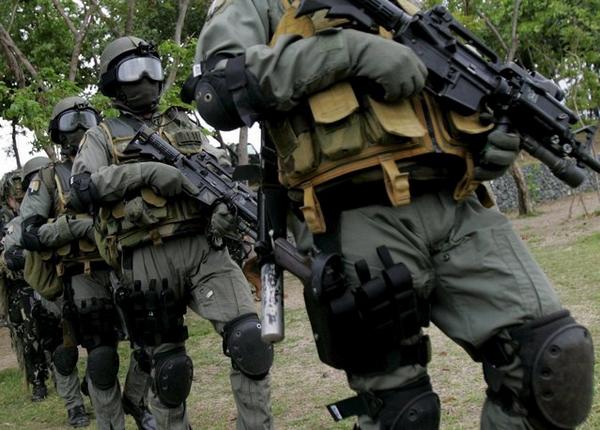The Philippine Supreme Court ruled Tuesday a security accord with the United States was legal, allowing more US forces into the former American colony as it seeks to counter Chinese expansion in the South China Sea.
The 10-year agreement, signed in 2014 but not implemented due to legal challenges, will see more US troops and warships rotate through the Philippines, and the hosts will receive help in building military facilities.
Supreme Court spokesman Theodore Te said the accord was upheld with a 10-4 vote, ruling that President Benigno Aquino’s government had the authority to sign the pact and did not need congressional approval.
The pact “is a mere implementation of existing laws and treaties”, Te said.
Aquino negotiated the accord to help the Philippines improve its military capabilities and draw the United States closer, partly to counter a fast-expanding Chinese presence in disputed parts of the South China Sea.
US President Barack Obama also pushed hard for the Enhanced Defense Co-operation Agreement (EDCA) as part of his so-called strategic “pivot” to Asia that has involved strengthening the American military presence in the region.
However it faced immediate legal challenges from groups opposed to US military involvement in the Philippines, a US colony from 1898 to 1946.
The Philippines hosted two of the largest overseas US military bases until 1992, the year after the Philippine Senate voted to end the leases in the face of strong anti-US sentiment.
Philippine military chief General Hernando Iriberri immediately welcomed Tuesday’s ruling, saying the accord would help the country address short-term “capability gaps” and modernize its armed forces.
Iriberri also emphasized the pact would help the Philippines “maintain maritime security”, a term commonly used when referring to efforts to contain China’s expansion in the sea.
As the court in Manila voted to approve the agreement, US Secretary of State John Kerry and Secretary of Defense Ash Carter met their counterparts Albert del Rosario and Voltaire Gazmin at the State Department.
“Our strategic relationship begins with a very firm pledge that the United States has an ironclad commitment to the security of the Philippines,” Kerry said, welcoming the decision.
“We will continue to consult and cooperate on all issues affecting regional security, such as territorial and maritime disputes in the South China Sea,” he added.
Anti-US anger
However opponents quickly voiced their concern.
“The government may have wantonly surrendered our national sovereignty to the US but the Filipino people will continue to fight for it,” said League of Filipino Students chairperson Charisse Banez.
“We will not allow the return of US bases in the country and its reoccupation of the Philippines.”
Filipino and US embassy officials declined to give details on Tuesday as to how quickly the pact would be implemented, or specifics such as which bases would be used by the Americans.
But Filipino officials previously said the United States would be offered access to key bases, including those facing the South China Sea that would allow rapid deployment into the waters.
And officials said in Washington that the United States would not reopen its former bases.
The Philippines and the United States are already bound by a mutual defence treaty signed in 1951 and a visiting forces agreement signed in 1998.
The Philippines, which has one of Asia’s weakest armed forces, has for decades heavily relied on US military aid for weapons and training.
And thousands of American troops pass through the country for regular war games that are authorized under the 1998 agreement. US navy ships also often make port calls.
But in recent years the tensions with China have seen Aquino’s government seek even greater US military and diplomatic support.
China claims almost all of the South China Sea, despite conflicting claims from the Philippines as well as Vietnam, Malaysia, Taiwan and Brunei.
In April 2012, after a tense stand-off with Philippine ships, Chinese vessels took control of a shoal just 220 kilometers (135 miles) off the main Philippine island of Luzon.
The Philippines has since become the most vocal critic of China’s efforts to claim the waters, including its strategy of turning islets into artificial islands that can host military facilities.
With its own armed forces unable to counter China, the Philippines had no choice but to draw in the United States and its allies such as Japan, according to security analyst Rodolfo Mendoza.
“Our only option is partnership with the US and other allies,” Mendoza told AFP.










